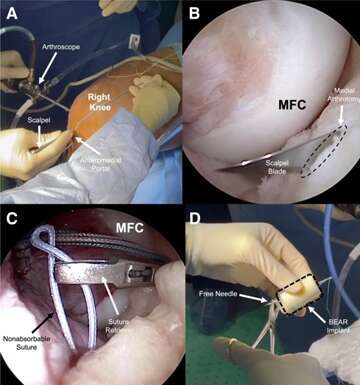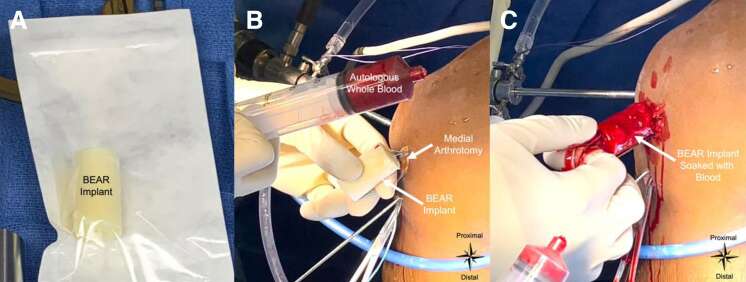Bridge-Enhanced Anterior Cruciate Ligament Repair
The anterior cruciate ligament (ACL) is one of the two major ligaments inside the knee, and is responsible for providing stability to the knee. Unfortunately, ACL tears are extremely common, especially in the younger, athletic patient population.
The typical course of action following an ACL tear is surgical reconstruction of the ligament. Reconstructing the ACL involves creating two tunnels– one within the femur and the other within the tibia– and passing a graft to replace the previous ACL. The grafts used in ACL reconstruction most commonly include the patellar tendon, hamstring tendon, and quadriceps tendon. These grafts may come from your own body (autograft) or from a tissue donor (allograft). However, almost all surgeons will opt for autografts in younger, athletic patients. Due to this, there are some associated rehabilitation and complication concerns associated with autograft harvest.
Bridge-Enhanced ACL Repair (BEAR) offers a new alternative to ACL reconstruction. Unlike ACL reconstruction, the BEAR procedure does not involve the use of a graft, and instead uses the remnants of your own ACL and a resorbable bovine collagen implant to heal your own ACL. In this surgical technique paper published in Arthroscopy Techniques, Dr. Jorge Chahla’s team presents the indications, rationale, and surgical technique for the BEAR procedure.


Dr. Jorge Chahla at Midwest Orthopaedics at Rush is at the forefront of sports medicine and uses the best contemporary and minimally invasive techniques to take care of his patients. Currently, he is the only surgeon in Illinois currently performing this procedure for his patients. If you think you may be a candidate for the BEAR procedure, schedule an appointment.
